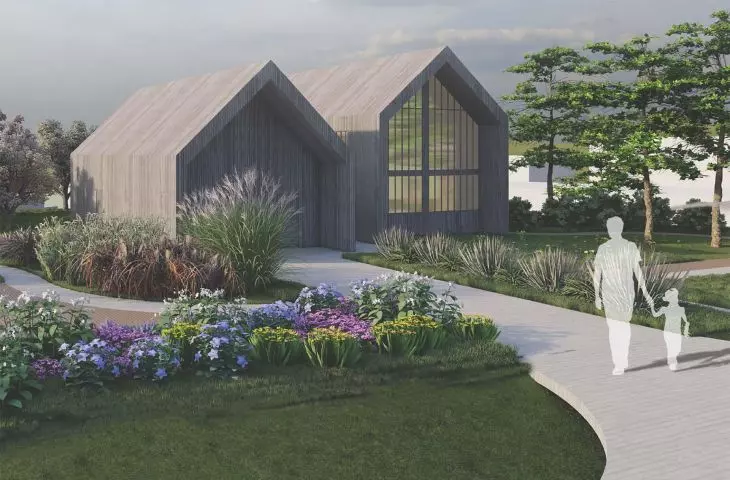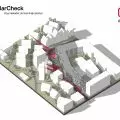Description of a multigenerational house in Piekary using eco solutions.
Work submitted to the Halina Skibniewskaya student competition - HEALTHYHOUSE
A house for a three-generation family was designed, constituting a detached object (ground and second floor) with a garage for two cars, with a basement. It is directly connected to the greenhouse (winter garden). The landscaping also includes four parking spaces (including one for people with disabilities), and educational gardens. The facility is located on the main street in the village of Piekary.
Concern for the environment has enriched the design of the house with ecological solutions. The reuse of resources that nature gives us - the sun and water - was considered a priority. Care was also taken to ensure clean air on the plot. The methods used have a beneficial effect on the environment and their operation does not lead to its degradation. The latest technologies available on the Polish market were used for these activities, as well as natural ways. Water retention was set as a priority. Retaining water in the landscape is important with today's climate change. It relieves the burden on storm drains, and additionally has a positive effect on the microclimate. In summer periods, it leads to lower ambient temperatures. The project includes: educational gardens (honey plant garden, orchard, vegetable and herb garden), rain garden, photovoltaic panels, perovskites, closed retention basin, air purification posts and permeable paving.
The reuse of resources that nature gives us - sun and water - has been identified as a priority
© Karolina Miachalec, Katarzyna Jamioł, Tomasz Jaróg
educational gardens
The educational gardens were divided into several zones. The priority was to introduce plants with high honey-giving properties, which will positively affect the bee population. It is worth recalling that bees are of vital importance. They are responsible for pollination of plants, a large percentage of which are edible plants (vegetables, fruits, herbs). Their extinction can lead to negative and significant consequences that will affect both the environment and human life. In addition, a zone has been set aside for a vegetable and herb garden, the purpose of which is to harvest organic plants grown using natural means and ecological methods of plant protection.
rain garden
On the northern side of the plot, a rain garden was designed to collect rainwater. The ground has the ability to quickly soak up water. The species were selected so that with the help of their roots and rhizomes they would purify rainwater and retain it in the ground thanks to which the rainwater drainage system will be relieved.
educational gardens
© Karolina Miachalec, Katarzyna Jamioł, Tomasz Jaróg
photovoltaic panels
The project uses photovoltaic panels, from which the collected energy will be used to generate electricity at home, power outdoor lighting and charge an electric car. This is an ecological and inexhaustible way of obtaining energy with low harm to the environment, animals and people.
Closed retention tank
Rainwater is collected in a closed retention tank, and the excess is discharged into the ground. This allows it to be reused for watering plants in the garden. This is an ecological way to save water, the resource of which is dangerously diminished by rapidly advancing climate change.
Water retention has been set as a priority
© Karolina Miachalec, Katarzyna Jamioł, Tomasz Jaróg
perovskites
This is an innovative technology that also allows for the accumulation and use of generated energy with the help of the sun's rays. Perovskites were used to cover the glazed walls and roof of the greenhouse. The energy generated will be used to insulate the space during the winter seasons.
air-purifying posts
The poles use a carbon-fiber filter to purify the environment. Materials that are not harmful to the environment were used for this. Their range reaches up to 10 square meters.
Water retention has been set as a priority
© Karolina Miachalec, Katarzyna Jamioł, Tomasz Jaróg
permeable pavement
The use of permeable pavements makes it possible to improve water relations on the plot. Their purpose is to allow water to seep into the deeper layers of the ground, thus relieving rainwater drains and improving soil moisture.
Karolina Miachalec, Katarzyna Jamioł, Tomasz Jaróg
Illustrations: © Authors



























